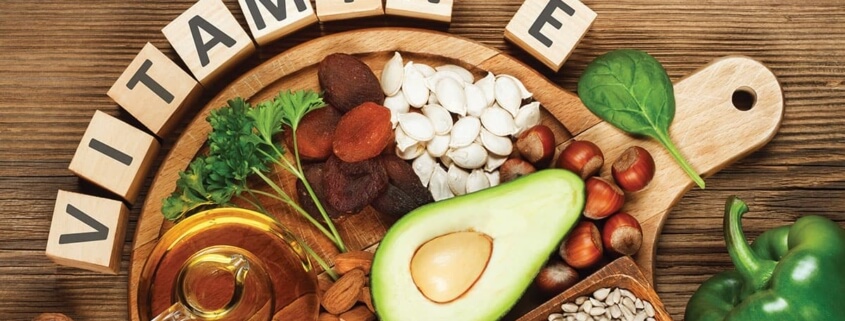Food Sources of Vitamin E for More Energy and Better Health
Vitamin E is one of the less familiar vitamins to many people. But it’s an important antioxidant, which means it helps prevent the cell, tissue, and organ damage caused by compounds called free radicals. As such, vitamin E plays a key role in maintaining energy and good health, especially as we age.
Among other benefits, vitamin E also contributes to immune system function, reproductive health, vision, and the creation of red blood cells. It’s particularly good for skin health too, which is why you see a lot of beauty and skin care products enriched with it.
Generally healthy teens and adults should get 15 mg (22.4 IU) of vitamin E per day. That’s not too hard to do if you know which food sources of vitamin E to regularly incorporate into your diet. Below are some recommendations about how to make sure you’re getting enough vitamin E to stay healthy, energized, and looking great.
Best Dietary Sources of Vitamin E
- Nuts and seeds aren’t just prime sources of healthy fats, dietary fiber, and protein—they’re also rich in vitamin E. The large variety of nuts and seeds available are great for daily snacks, but limit it to about a handful since they’re high in calories. Also, let’s mention peanuts and peanut butter here, even though peanuts are technically a legume, not a nut.
- Vegetable and other plant-based oils are also healthy fats that provide a good dose of vitamin E. Just 1 tablespoon of wheat germ oil delivers almost 100 percent of the recommended daily allowance. Other examples include sunflower, safflower, grapeseed, canola, palm, olive, and corn oil. Cooking with them and using them in homemade salad dressings are easy ways to get these oils in your diet.
- Dark green veggies—especially leafy ones—also supply significant quantities of vitamin E. Spinach, kale, Swiss chard, beet greens, collard greens, turnip greens, dandelion greens, broccoli, and asparagus are all good picks for getting enough of this important nutrient.
- Orange fruits and veggies tend to be relatively high in vitamin E. Options include dried apricots, mangoes, sweet potato, butternut squash, pumpkin, mamey sapote, orange bell peppers.
- Other foods worth mentioning for their vitamin E content include wheat germ (it’s not just the oil), trout, salmon, cod, swordfish (but it’s high in mercury, so don’t eat it often), abalone, cranberries, kiwi, avocado, tomato, and red bell pepper.
A Warning About Vitamin E
Never start supplementing with vitamin E without getting the OK from your doctor first. Upping your intake can cause dangerous interactions with a number of health conditions, medications, and other supplements. And please make sure your doctor is aware of all drugs and supplements you take, even the all-natural stuff.
One of the biggest risks is that vitamin E acts as a blood thinner. So, people with bleeding disorders or who take a blood thinner or anticoagulant—or even those who just supplement with other compounds that inhibit clotting—can suffer serious consequences from taking extra vitamin E.



